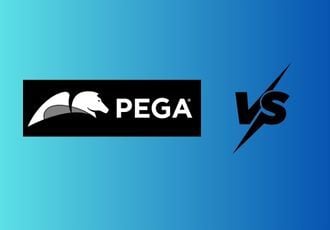The label ‘legacy application’ tends to be awarded to applications that are in use in an organization which are not being actively developed or rolled out. They serve the purpose they were originally built for, but their inflexibility and lack of available skills means there are no plans to develop them further.
Looking specifically at BPM (Business Process Management), the cost of owning a legacy application built on a legacy BPM platform can be extensive. The obvious costs, such as the annual license maintenance fees are well known, but what about other less obvious costs?
Operational Cost
Business processes are changing constantly – in response to competitors, market requirements, new products, new organization structures etc. If these constant changes are not reflected in the processes that have been automated, people start to build workarounds. Spreadsheets start becoming vital to the business operation as does email, chat and file sharing. At this point process automation has created inefficiencies in the day-to-day operations.
Opportunity Cost
Process automation should be a key enabler of innovation in an organization – changing the way people work, how they collaborate, how customers are served while at the same time gathering data to provide insights as to how further changes can be made.
If the process automation platform is a legacy platform which is not being actively developed, then the opportunity to use this as an innovation enabler disappears. Innovation that involves process changes just becomes too difficult.
Technology Cost
.png?width=150&name=blue%20arrow%20(24).png) Legacy BPM platforms are often on-premises applications which do not have a clear path to the cloud. This can create a barrier to cloud adoption and slow down the move of other applications to the cloud having a wider impact on the businesses digital transformation plans. In addition, the technical skills to maintain these legacy applications with their extensive custom code and complex integrations may no longer exist – which may leave an organization with a key application which is unmaintainable.
Legacy BPM platforms are often on-premises applications which do not have a clear path to the cloud. This can create a barrier to cloud adoption and slow down the move of other applications to the cloud having a wider impact on the businesses digital transformation plans. In addition, the technical skills to maintain these legacy applications with their extensive custom code and complex integrations may no longer exist – which may leave an organization with a key application which is unmaintainable.
Deployment Cost
Legacy applications often come with a legacy approach as to how they should be adopted by the business. This approach often mandates gaining an understand the existing operation in detail, proposing an alternative, signing off on requirements and then starting a build project. This approach takes a long time, costs a lot of money and often becomes bogged down in technical details. It is hard to maintain the enthusiasm and attention of the business users throughout this process.
Unfortunately, because of this many businesses with legacy BPM platforms simply will not extend the use of the platform which in turn means that many processes are never automated.
Avoiding This Cost
.png?width=300&name=blue%20arrow%20(25).png) Given this cost of ownership, maintaining the status quo with the existing legacy application is not really an option yet replacing the existing platform can seem dauting.
Given this cost of ownership, maintaining the status quo with the existing legacy application is not really an option yet replacing the existing platform can seem dauting.
However, many of the costs of owning a legacy BPM platform can be addressed through the introduction of a modern process automation platform.
These platforms, such as FlowForma Process Automation, are provided as a service aimed at business rather than technical users. These services can be easily subscribed to and, with minimal guidance, used by business users to start automating their processes. This eliminates the traditional technical costs and deployment costs associated with a legacy BPM platform.
Because business users have the skills to modify their own processes, their processes are adjusted as the need arises ensuring that they are always aligned with the current business requirements. Armed with this new capability the organization can see how they can leverage their process automation platform to deliver innovation in their operations and in the services they deliver to their customers.
With the confidence gained over a short time, replacing the existing legacy application may not seem as daunting.
Have further questions about how process automation can drive digital transformation within your organization? Simply leave a comment below or reach out to our product experts for a specialized demo to learn more. Additionally, you can try a free 14-day trial of our process automation tool no credit card - no commitment!
 By
By 




